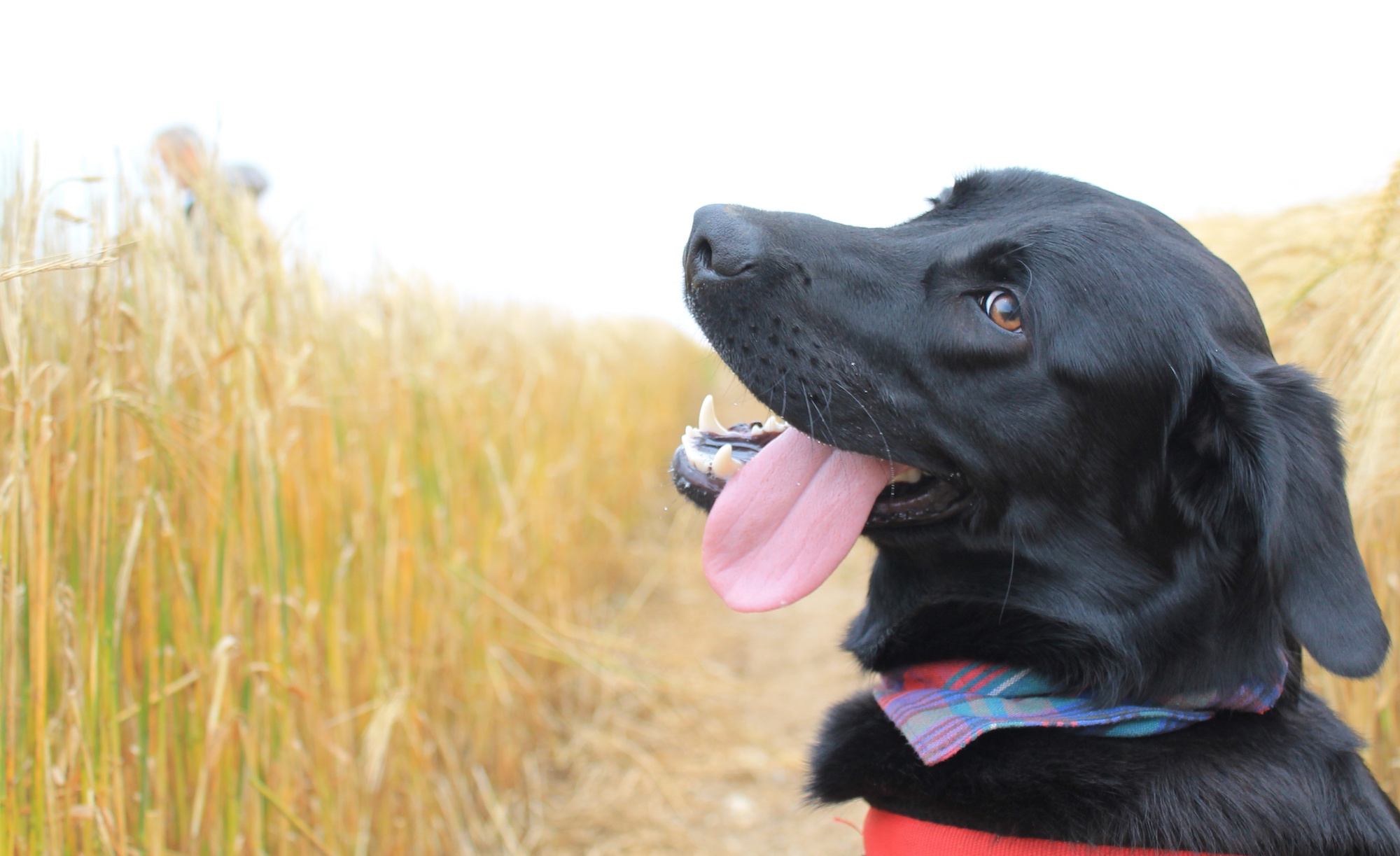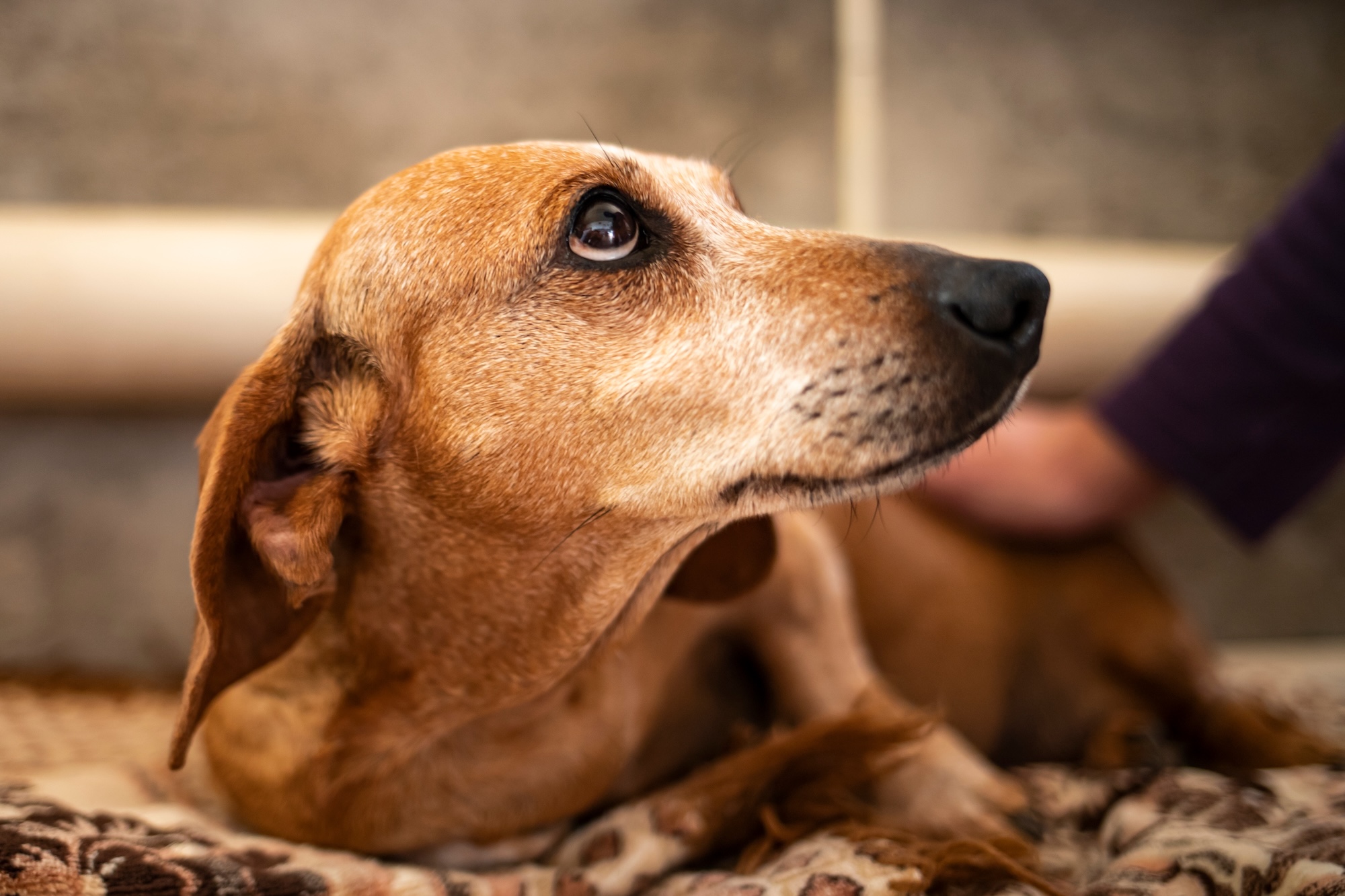If your dog experiences pain while pooping, you should contact a veterinarian as soon as possible. While not every situation in which pooping hurts for your dog is a medical emergency, it’s not normal for any dog to feel pain while going potty–and, in some cases, it can be an indication of a serious problem.
Here are some of the reasons it might hurt a dog to poop, and how those conditions can be treated.
What can cause painful defecation in dogs
Constipation
If your dog is straining to poop or having painful bowel movements, they may be constipated. A dog might become constipated due to medication side effects, an intestinal blockage, dehydration, insufficient dietary fiber, or if they’ve eaten something that they shouldn’t have. Signs of constipation include very firm or dry stools, loss of appetite, stomach pain, lack of bowel movements, and bloating.
The proper treatment for constipation depends on its root cause, and if your dog isn’t pooping regularly you should get them to a vet for a checkup. Generally speaking, it’s always a good idea to provide your dog with plenty of fresh water and a healthy, complete and balanced diet that has an appropriate amount of fiber. Water will help keep your dog and their poop hydrated. Fiber increases stool bulk, making it easier for your pup’s intestine to move things along. Sometimes you can add a little fiber to your dog’s diet by giving them a small amount of plain canned pumpkin. But consult with a vet before doing this, and never use pumpkin pie mix or canned pumpkin with added salt; those ingredients aren’t good for your pup. In some cases, a veterinarian may prescribe a gentle laxative for a constipated dog.
Read more about constipation here.
Diarrhea
Diarrhea is a term for loose, liquid bowel movements that happen more frequently than normal. Dogs can experience diarrhea for many reasons, some of which are more serious than others. Common causes of diarrhea include inflammatory bowel disease (IBD), drug side effects, allergies, food poisoning, parasitic or bacterial infections, and changes in diet. The severity and discomfort caused by diarrhea vary depending on the cause, as does the treatment. If your dog is experiencing diarrhea, they’re at risk of dehydration. Provide them with plenty of fresh water and consult with a veterinarian about how to help them.
Ingestion of foreign objects
Dogs who eat items like string, grass, hair, or pieces of toys may end up constipated, or with part of their poop stuck or dangling. If you see string, hair, or grass poking out of the stuck feces, do not attempt to pull on it. These items can cause internal damage if they are twisted around the intestines.
If your dog has eaten something they shouldn’t have, call a vet as soon as possible. Some foreign objects can be very dangerous to dogs, and a delay in seeking care can make a difference in their prognosis.
Hemorrhagic gastroenteritis
Hemorrhagic gastroenteritis is characterized by the sudden onset of diarrhea and vomiting, with either or both possibly containing fresh or old blood. In addition to pain while defecating, your dog may have abdominal pain or a decreased appetite.
Although there is a long list of factors that may contribute to hemorrhagic gastroenteritis, experts still aren’t sure exactly what causes this serious condition. Your vet will provide you with advice on your dog’s specific situation, but will likely recommend a change in diet, plenty of fluids, and perhaps antibiotics if they feel it is necessary to treat a secondary infection. Many dogs with hemorrhagic gastroenteritis require IV fluids to stay hydrated.
Anal sac inflammation
In their normal functioning, the glands on either side of your dog’s anus release a strong-smelling liquid every time they defecate. This scent provides other animals with valuable information, and helps explain why your dog likely has such a keen interest in sniffing other dogs’ behinds and places where they may have gone to the bathroom.
Sometimes, however, these glands become inflamed, and the fluid gets trapped inside. When this happens, said fluid thickens into a paste and causes the glands to swell further. Not only is this painful, but it can also result in more serious issues such as infections and abscesses.
If this happens, your dog may scoot in an attempt to relieve the resulting pain and discomfort. Other signs that there is a problem with the anal glands include: not wanting to sit down, struggling to defecate, or whimpering and crying out when doing so. If the anal glands are to blame, you may notice a strong fishy odor near your dog’s rear end. If the abscess ruptures, you may also see blood.
If your dog’s anal sacs seem like they might be clogged, get them to a veterinarian as soon as possible to be examined and, if necessary, treated. The vet may manually express your dog’s glands by gently applying pressure to the sacs. This should provide relief. Don’t try to do this yourself–unless your vet has given you the appropriate training–as you can easily damage your dog’s tissue and cause more harm than good. You may have heard that your pup’s anal glands should be expressed regularly, but you shouldn’t proactively do this unless your dog is experiencing problems, or you’ve been directed to do so by a vet. Excessive or incorrectly executed expressions can cause problems themselves.
In persistent cases, your dog may require frequent manual expressions or anti-inflammatory medication. If the glands have become infected, a course of antibiotics may be necessary.
Swollen prostate
A swollen prostate may also cause a dog pain during defecation. If the gland becomes swollen, it can press on a dog’s colon and make defecation difficult. A dog with a swollen prostate may also have trouble urinating, taking longer and producing a thinner stream than usual. Other possible signs include abdominal pain, difficulty walking, and blood in the urine. Dogs’ prostates may become swollen due to bacterial infection, hormonal changes, a prostatic abscess, cysts, or–rarely–prostate cancer. If you suspect that your dog has a prostate issue, visit your veterinarian as soon as possible to get a diagnosis and treatment.
Parasites
Parasites like tapeworm, roundworm, whipworm and hookworm could make your dog scoot or exhibit signs that they’re not comfortable when defecating. Your pup could contract a parasite through avenues including sniffing or eating other animals’ excrement, hunting rodents, or eating fleas (which carry tapeworm larvae).
If your dog has worms, you might be able to see tiny white seed-like objects near its anus.
Parasites can be particularly dangerous in puppies; in older dogs, the consequences are often less severe. Nevertheless, worms, which steal the dog’s food and can cause damage to the lining of their gut, can be serious in a dog of any age–especially if they go untreated. If you have reason to suspect that your dog has a parasite, you should bring them to the veterinarian promptly to address the issue.
If your vet thinks that your dog may have a parasite, they will do an examination and possibly use stool samples or blood tests to make a diagnosis. In the event that they do find parasites, they’ll likely prescribe deworming medication.
Tumors
While other reasons are more common, sometimes a tumor in the colon can cause difficulty or pain while defecating.
When to seek veterinary care for a dog who hurts when pooping
Any time your dog seems to be uncomfortable when pooping, you have a good reason to contact a veterinarian. Defecation is a normal activity that should not cause your pup pain. If your dog is crying out while straining to poop, that means it’s extra important to get them medical attention as soon as possible. In the meantime, ensure they’re getting enough water and fiber in their diet.
Your vet will be able to give your dog a physical examination and provide you with a proposed treatment plan to remedy their painful defecation. Possible treatments vary depending on the cause of the painful stools.




